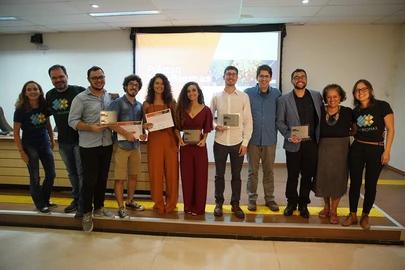Amazonian and Cerrado Biomes in danger
May 13, 2019.
Brazil - Expanding soybean production is a major threat to tropical rainforests and ecosystems in the Amazon and Cerrado (Brazilian savanna) regions. Today, both biomes stand to lose even more forest cover due to agricultural expansion – albeit recent policy actions and commitments that aim to protect standing forests.
A group of researchers – including ZEF junior researcher Gabriel Frey and ZEF senior researcher Jan Börner, have recently received the MapBiomas award for their research on the identification of regions vulnerable to soybean expansion, and analysis on how infrastructure improvement can impact soybean expansion.
Using a machine learning approach, the researchers developed a model to predict soybean expansion using 2014 infrastructure data. They used this information to then develop soybean expansion scenarios using future infrastructure development plans.
Large areas are threatened
These data show that large areas are vulnerable to soybean expansion, and that infrastructure development has the potential to convert even more land to soybeans. Of the 14.7 million hectares that have a high probability of being converted to soybean production based on 2014 levels of infrastructure development, 9.8 million hectares are comprised of pastureland, and 400.000 are currently active forestlands. If infrastructure were to develop based on the levels used in the scenarios, areas with high probability of soybean expansion could increase up to 2.1 million hectares (or 14,6 %) - roughly the size of Slovenia. All told, changes in infrastructure could increase 51% of forest areas and 11.4% of pasturelands under high-risk of soybean conversion.
If these areas are converted to soybeans, at least 4.8 billion tons of CO2 could be released into the atmosphere, a value that represents 10 times the total CO2 emissions of Brazil in 2014. The results highlight the importance of targeting conservation policies and enforcement actions, including the Soy Moratorium, to mitigate future loss of forests associated with infrastructure improvements in the region.
“Conservation policies and enforcement actions should focus on these areas and the processes that lead to the possible conversion of these areas into soybean farms, taking also into account how future infrastructure projects can impact such conversion”, states Gabriel Frey.
The authors used environmental and socioeconomic data to identify the areas where soy could expand. “We took a modelling approach widely used in ecology, and we brought it to this area of knowledge as a new tool to help in the efforts of forest conservation and policy-making”, says Frey.
Frey received the award in Brazil on behalf of his five colleagues. The award winners also receive a cash-prize of 6000 Brazilian reais (around 1500 USD). “We were very surprised by the news and excited with the recognition of our work”, tells Frey. “My colleagues and I are very pleased.”
Information on the MapBiomas Award
The Brazilian Annual Land Use and Land Cover Mapping Project (MapBiomas) is an initiative that involves a collaborative network of biome, land use, remote sensing, GIS and computer science experts that rely on the Google Earth Engine platform and its cloud processing and automated classifiers capabilities to generate Brazil’s annual land use and land cover time series.
To stimulate and expand more applications and work with analysis of land use change in Brazil, the initiative decided to launch the MapBiomas Award, in partnership with the Institute for Energy and Environment (IEMA) and Instituto Escolhas, with support from the Institute for Climate and Society (ICS).
In this first award, MapBiomas awarded works that explore the relationship between energy and transportation infrastructure and land use/cover changes in Brazil.


